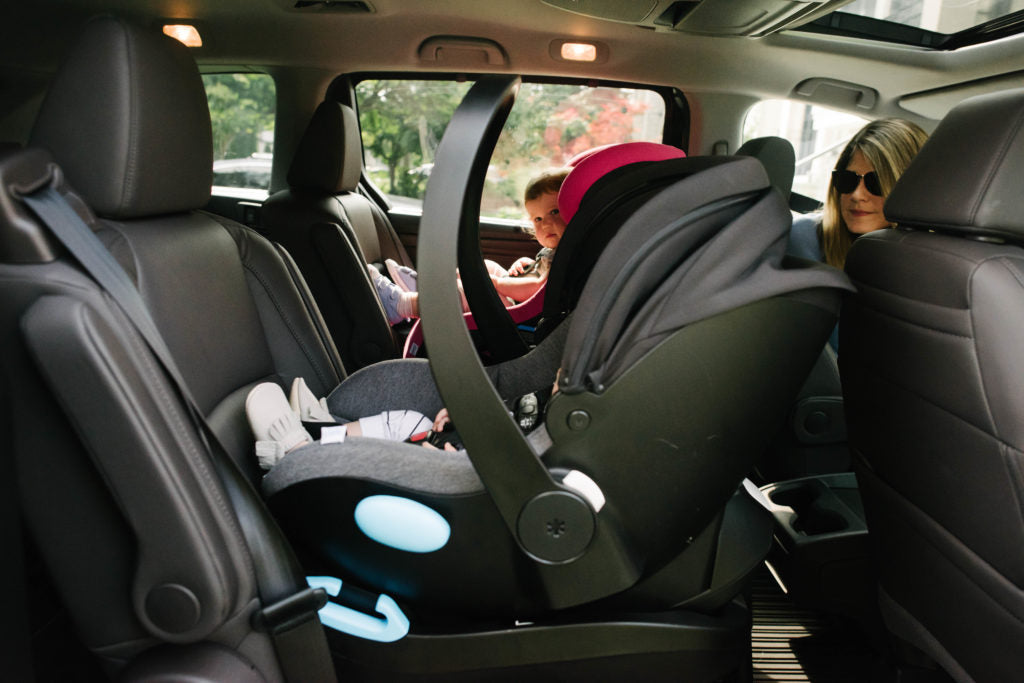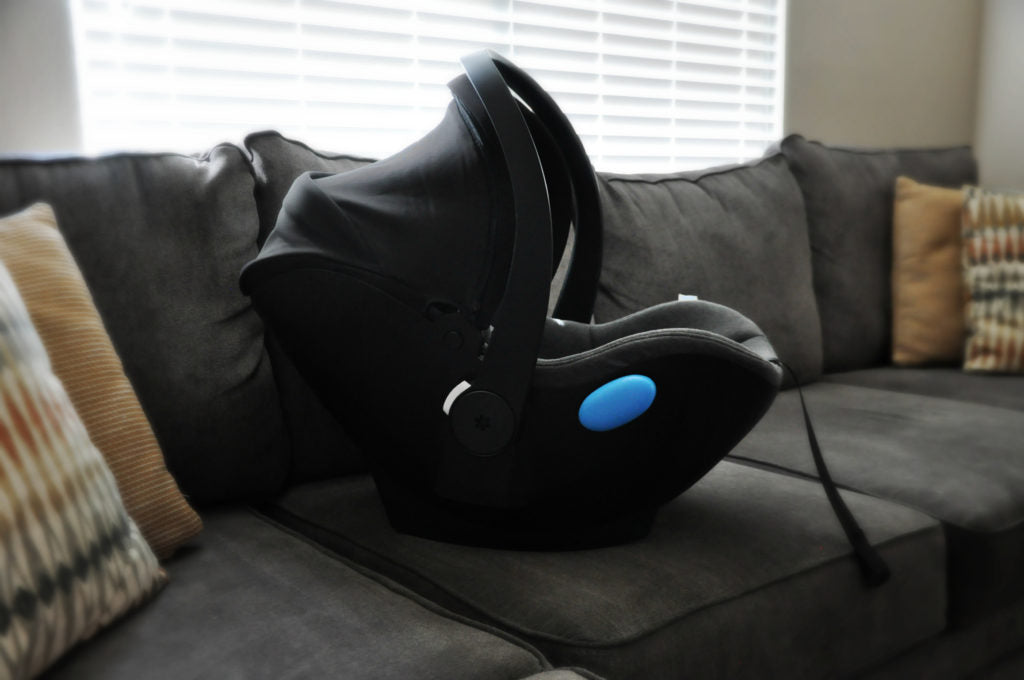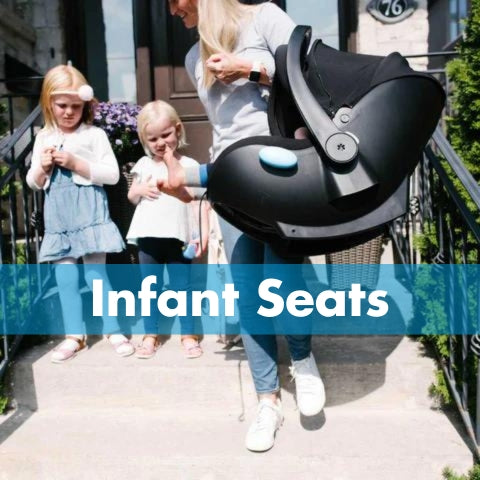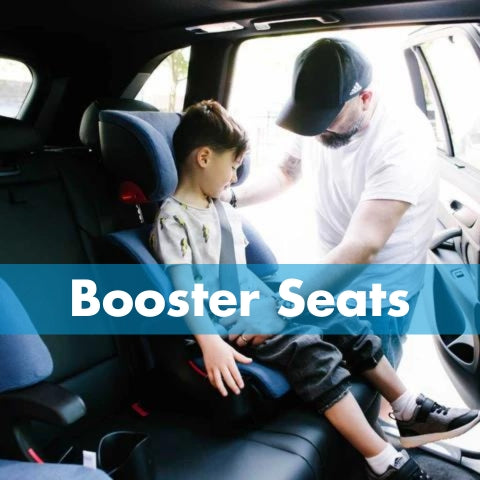Becoming a parent for the first time is one of the most exciting, yet terrifying, times in your life. Babies don’t come with their own instruction manuals, but the gear you buy for them sure does!! So many things to assemble and install, so many pages to read. Packing the hospital bag is on the top of most people’s list of things to do as their due date gets closer, along with making the nursery look cute, hanging all of those itty-bitty clothes, and putting a lock on every closest and cupboard in the house. But an item that is often overlooked as a priority is the first car seat. It’s the one thing that’s sole purpose it to protect your new bundle of joy as they take their first ride home with you and beyond.
Picking out your child’s first car seat is about much more than picking out your favorite color or adorable pattern. Below are the most important things you need to know when selecting and using an infant seat.
Pick the right seat.
There is no one right seat for everyone. Kids, parents, and cars come in all different shapes and sizes. This is one of the reasons there ARE so many options when it comes to car seats. So what is the best seat for you?
The best car seat is the one that:
- Fits your child – Choose a seat that fits your child now and will fit them for a while. When shopping pay close attention to the height and weight limits. If you are at risk for pre-term labor or are having multiples you will want to look for an infant seat that starts at 4 lb and has a newborn support system, like the Clek Liing. This will help ensure that even the tiniest of babies will be able to fit properly for their first ride home.
-
Fits your vehicle – If possible, try a car seat in your vehicle before purchasing. Not all car seats will work with all vehicles. Some infant seats take up a lot of room in the back seat, so you want to ensure that the car seat you choose will not impact the front passenger’s room in an unsafe manner. We have found that Liing take up on average 3 less inches of space compared to other infant seats on the market today.
- Good to know: A driver should always have at least 10 inches of space between the center of their breastbone and the steering wheel. If this cannot be accomplished with a rear-facing seat behind the driver consider moving the car seat to a different seating position.
- Will be installed and used properly every ride – This is also referred to as ease of use. You need to be comfortable and confident in your abilities to install the car seat you purchase. The adorable pattern on a seat is not going to keep your child safe in a collision, but the proper installation will. Browse thru the manual, try and install a display seat in your vehicle if your retailer allows, look up the manufacturer’s website to see what support they offer online. The more support there is available to you, the more successful you will be at being the 1 out of 4 people who have it done correctly! You will also want to make sure it is easy to strap your child in. Open and close the chest clip and tighten and loosen the harness to see if you find this easy to do with the seat you’re considering.
Buckle up baby the right way!
The harness in a child’s car seat helps keep the child safe by spreading the forces of a crash over the strongest parts of their body. As such, a harness that’s set at the right height and tightened properly to a child’s comfort maximizes their safety.
Here’s a quick checklist to ensure your child’s harness is secured correctly when they are rear-facing:
- Harness straps at our below shoulders
- Visible slack removed from the hips
- Unable to pinch a horizontal fold in the harness at the collarbone
- Chest clip at armpit level
- Buckle tongues locked into buckle
Know where you can safely use an infant seat
Car seats are for cars, though in the US we have turned infant seats into an all-purpose baby carrier with the option to attach them to strollers and carry them with their handles. The ability to remove the infant seat carrier from the base with baby still inside the seat makes for a portable vessel to move both around your busy life seamlessly. But this ease of portability comes with its own set of risks as there are safe places to use or place a carrier, and then there are not.
Safe places for infant seats:
- In the car – The safest place to use your infant seat, and the main reason it exists, is in the car properly installed, whether with or without the base. Car seats are designed to keep protect children in the car in the event of a collision.

- On the ground – When you remove your baby and carrier from the car and need to set them down, do so on the ground. There is a caveat to this however. In the car infant seats are designed to sit at a certain angle. When placed on flat ground you lose the ability to adjust to the angle, and this could put your child at risk for cutting off their airway should the angle of the seat be too upright. Bottom line: Best practice is if out of the car, take baby out of the seat.

- Connected to a compatible stroller – Infant car seats are able to attach to a variety of strollers, but not all. We’ll cover this in more detail in the next section.

Unsafe places for infant seats:
- Elevated surfaces – Never place your baby on an elevated surface while in their infant seat carrier as both can fall and cause injury.
- Soft Surfaces – It’s also not a good idea to place baby and seat on something like your bed or a couch while in their infant seat. The seat could roll over and the soft surface suffocate your baby, or they could experience a fall as we’re also dealing with an elevated surface in these situations.

- On top of shopping carts – This is one that we all see far too often. Car seats sitting in the toddler seat area of a shopping cart. While this may seem like it’s meant to be, that is far from the case. Placing an infant seat on top of a shopping cart makes the cart top heavy and more prone to tipping over, sending baby and seat crashing to the floor. If you must take the infant seat shopping with you, it is suggested that the car seat be placed in the large part of the shopping cart where it cannot fall. The reality is, yes this will essentially take up the entire basket where you needed to place the items you’re shopping for. An alternative, and often preferred option, would be to leave the infant seat in the car and wear your baby with a carrier. This keeps baby close to you and frees your shopping cart for that long list of items you need.


Important Note: Whenever you are using your infant seat carrier outside of a vehicle it is important to always keep the harness buckled and snugly adjusted on your baby. If the straps are loosely buckled or unbuckled completely baby is at risk of falling out or strangling themselves on the harness.
Make sure your car seat and stroller are compatible
While it may seem like at first glance that you’ll be able to connect an infant car seat to any stroller you choose, this is not the case. When shopping for your baby’s first car seat you will want to find out what strollers it is compatible with. It’s common for first time parents to shop for the stroller first, fall in love with one, only to find out that it doesn’t work with the car seat they decided on. And instead of selecting a new stroller they settle for a different car seat.
We recommend selecting your car seat before even looking the direction of strollers. After all, the car seat is a safety device designed solely to keep your child alive and unharmed in a collision, and as you learned in the first section, they are not all going to be the right seat for your needs. Once you find that right seat then you can find out what strollers it works with and decide based on that. Take the Clek Liing for example. You can find the compatibility list here.
Planes and Taxis… use your infant seat!
As new parents we are heavily influenced by what we see others around us doing. How many times have you been on a plane and noticed a baby on a parent’s lap? It is such a common sight that it must be safe, right? WRONG. If you live in an urban area it is not out of the ordinary to see a parent slide into a taxi with baby in arm, no car seat anywhere to be seen. There is nothing safe about any passenger being unrestrained in a plane or taxi. Not adults, and certainly not children. The laws of physics apply no matter where you are….well except space, but until space tourism is a thing we don’t really need to cover it 😉.
Planes
The FAA strongly urges parents and caregivers to secure their children under age 2 in a car seat, yet it is not currently a law. Once your child is over 2 they will be required to have a paid seat on the plane but there is still not a requirement that they sit in a car seat. Our suggestion? Bring it on board! Your child will be more prone to sit in something familiar to them, and with a five-point harness you know they aren’t going anywhere!
Wondering how exactly you’re going to get that infant seat on the plane? Use a stroller: Wheel your baby in their infant seat attached to a stroller right up to the door of the plane. Gate check your stroller in a protective stroller bag and then carry the infant seat on board. Once on board secure the carrier according to your seat manual’s instructions (typically a lap belt installation). No need for the base on board….or even on your trip! Take advantage of your infant seat’s baseless installation and leave the bulky base behind at home.
Taxis
Believe it or not, there are still many states today that have laws which exempt taxi cabs from car seat laws that apply to private vehicles. Regardless of whether or not you are in one of these states, the safest place for your child while riding in a taxi is restrained in their car seat. The great thing about infant seats is most can be installed without the base like you learned above so you can quickly load the stroller into the trunk of the cab, hop into the back seat, strap your carrier in baseless, and off you go to your next stop! If you will be frequently installing your infant seat without the base look for one that offer a European Belt Path, like the Clek Liing does. This will allow you to get a tight install easily and quickly.
Eager to learn more about car seats and the safety around them? Curious if you’ve checked all the right boxes before your little one arrives? Fear not, there are local resources out there for you. Find a Child Passenger Safety Technician in your area, set up an appointment with them, and be prepared to take notes and participate in installing your baby’s seat.




